Children's skin is like a litmus test: it instantly signals problems in the body and improper care. That is why it is so important to pay attention to any changes in her condition. Let's talk about how to develop an algorithm for caring for dry skin of babies.
- Main characteristics of healthy baby skin
- Causes of dry skin in children
- What does dry skin mean in a child?
- Dry skin on a child's feet
- How to eliminate dry skin
- Precautions for dry skin
- Rules for care at different times of the year
- Prevention measures
- Tools Overview
Main characteristics of healthy baby skin
Soft, delicate, velvety - this is how we usually talk about a baby’s skin. But even if the child is healthy, it does not become so immediately after birth.
Why? Explains Alexander Prokofiev, dermatovenerologist, medical expert at La Roche-Posay: “After the baby is born, his skin needs to adapt to the environment. In newborns, this process has not yet been completed, so their skin is more dry, more susceptible to irritation, redness, and easier to injure. These features disappear with age.”
Typically, by the age of two, the upper stratum corneum of the epidermis thickens, and the skin becomes more protected from external influences. The sebaceous and sweat glands begin to work more actively, and the process of thermoregulation gradually normalizes.”
Normally, a child’s skin should be pale pink and have good turgor, that is, be soft and elastic to the touch.
Bathing water should not be too hot © iStock
Causes of dry skin in children
“Children’s skin can become dry under the influence of both external and internal factors,” says Alexander Prokofiev. Let's list the external reasons.
Using detergents more than once a week, the water is too hard for bathing (it is better to pass it through a filter).
Exposure to the sun without protection
The baby’s skin is not able to resist the effects of UV rays, so children under one year old can be kept in the open sun for no more than five minutes a day, and even then “under the cover” of special baby creams with high SPF.
Dry indoor air and overheating
Overheated air is a test for a child’s imperfect thermoregulation system: the skin turns red, becomes hot, and irritation appears. The same thing happens if you wrap your baby up too much.
Cold air coming into contact with delicate baby skin can cause redness, dryness and irritation.
Internal factors may be due to:
poor nutrition, which is expressed in a lack of vitamins;
some diseases, primarily skin and endocrine;
What does dry skin mean in a child?
Very dry baby skin is a cause for concern. It is more vulnerable, easily injured, and damaged skin is more susceptible to infections, especially in infancy.
In addition, dryness may indicate the presence of:
ichthyosis (a disorder of keratinization of the skin, which manifests itself in the form of scale formation);
other diseases, including diabetes.
If dryness is a persistent feature of your child's skin, it makes sense to first consult with your pediatrician and then see a dermatologist for appropriate treatment.
Dry patches of skin on the child's face and body
Friction from shoes and clothing can also cause redness and flaking of baby's delicate skin. Sometimes the cause of hypersensitivity is the diseases mentioned above. In any case, choose clothes and shoes for your baby made from natural materials, and use children's hypoallergenic powders for washing. To prevent dry feet in summer, it is better to wear open-toed shoes.
How to eliminate dry skin
Use moisturizing creams, lotions or body milks made specifically for children's skin. On such products it is always written what age they are intended for.
The water for bathing the baby should not be hot. The optimal temperature for the bath is 36–37 degrees.
Bathe your child every day, but use detergents no more than once a week. Choose special delicate formulas for this.
Moisturize dry areas with baby cream, milk or lotion.
An important condition against dry skin in children is the drinking regime © iStock
Precautions for dry skin
Dry skin brings a lot of anxiety to a child. It itches, itches, flakes - all this causes moodiness and bad mood. What can parents do in this situation? First of all, eliminate any factors that provoke dry skin of the baby.
It is not advisable to use soap when bathing and washing your face; it dries out the skin.
Sponges made from rough materials are also harmful. Washing should be as gentle as possible.
Do not wrap your baby while walking to avoid sweating.
Do not self-medicate. If dry skin persists, consult a doctor.
Rules for care at different times of the year
A child's skin needs protection in both heat and cold.
Remember that you should not be in the sun during the hottest time, from 11 a.m. to 4 p.m. On the beach, be sure to wear a T-shirt and a Panama hat on your baby, and use children's sunscreen. When you return from a walk, wash off the SPF cream and apply a moisturizer to your skin.
Exposure to cold and dry indoor air contributes to excessive dryness of the skin. Install a humidifier in your home or regularly cover the radiators with a wet towel. Moisturize your baby's skin after bathing.
Prevention measures
To avoid dry skin, offer your child something to drink often. Make sure there are enough vitamins in his diet. Moisturize your baby's skin after bathing. In your care, use only hypoallergenic products tested by dermatologists.
The creams should include moisturizing and soothing components: panthenol, niacinamide, oils (shea, olive, wheat germ), zinc oxide, vitamins A, B, E, F, plant extracts (chamomile, calendula, string).
Tools Overview
Milk for very dry skin Lipikar Lait, La Roche-Posay
Formula with shea butter, thermal water and niacinamide nourishes the skin and restores its lipid barrier. Suitable for use in infants, children and adults.
Skin cleansing gel Lipikar Gel Lavant, La Roche-Posay
Contains shea butter and niacinamide and is free of fragrance and parabens. Has skin-soothing properties, suitable for the whole family.

The moisture content of the skin of babies varies. Even a healthy baby may have a tendency to dry skin. This article will help parents understand what is normal and pathological.
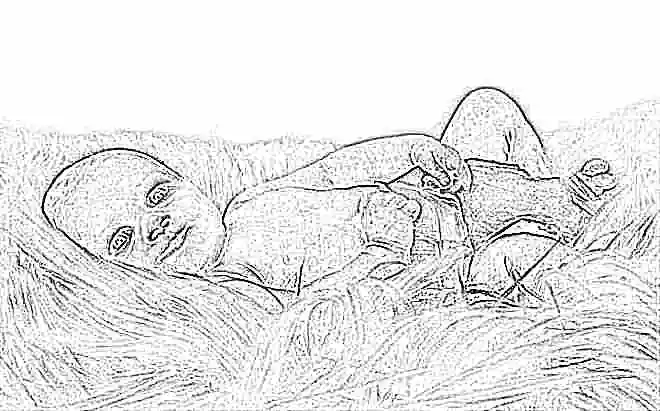
How does it manifest?
Dry skin is noticeably different in density from moisturized skin. This difference is usually identified by parents when cleaning their baby every day. In some cases, the skin becomes rougher and uneven to the touch.
Severe dryness can lead to the appearance of small cracks on the skin, which become possible “gates” for secondary infection.
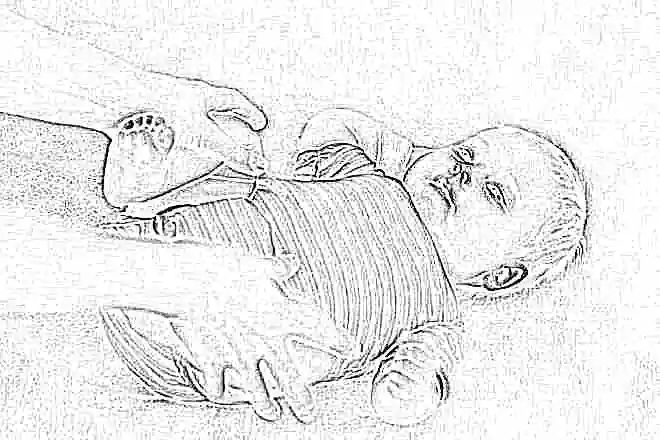
The color of dry areas of skin is noticeably different from healthy ones. They usually look lighter, and the skin texture may be disrupted.
The density of the affected areas decreases. The skin becomes less smooth and shiny. In some forms of allergic eczema, it looks “aged.”
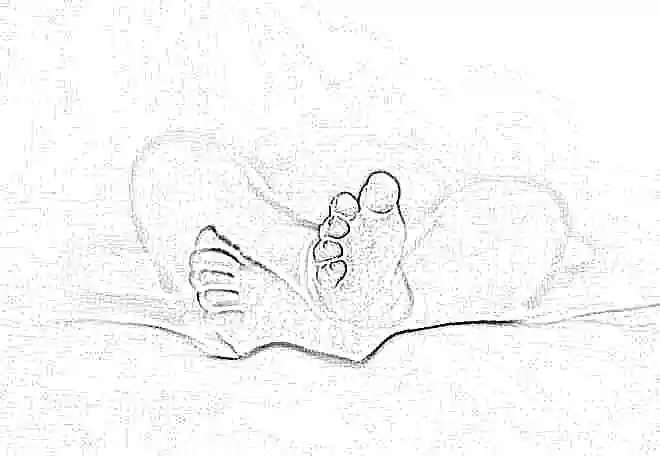
The localization of the appearance of dry areas largely depends on the initial cause that contributed to their development. If severe dryness appears between the toes, this often indicates that the child is developing scabies.
Dry fingertips are often a symptom of a vitamin deficiency or allergy. After suffering viral or bacterial infections, in some cases, dry skin may also increase.
If, for some unknown reason, a child’s palms become dry and the skin itching intensifies, then you should pay attention to what soap he uses to wash his hands.
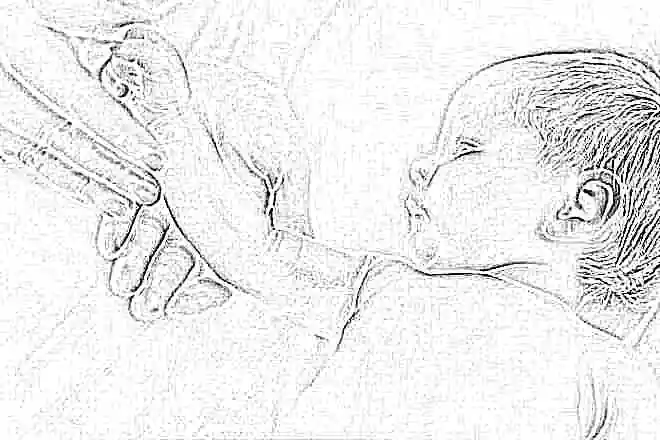
Causes
According to statistics, dry skin on the hands and feet most often occurs in newborn babies and children in the first year of life.
Many parents prefer to cope with this condition at home, without seeking medical help. Others believe that it is impossible to cope with increased dryness on their own.
In order to understand in which case you may need to consult a specialist, you should first understand what doctors consider healthy skin.
The baby's skin is usually smooth to the touch. Optimal skin hydration is ensured by complex metabolic processes. The condition of the skin largely depends on how well the child’s water-lipid layer is expressed. A special ratio of hydrophilic molecules and lipid fractions ensure proper hydration of the skin layers.
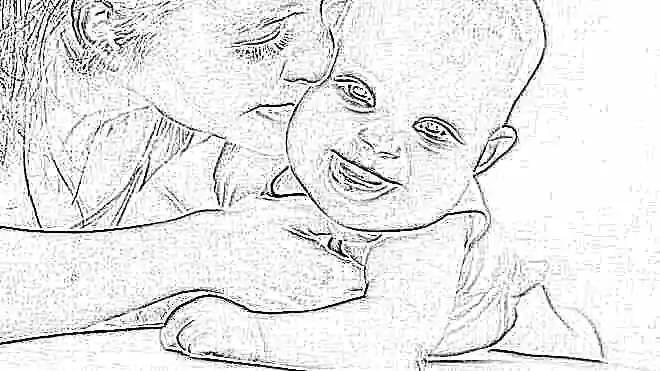
A variety of reasons lead to the development of excessive dryness in a baby. The delicate skin of a child is very sensitive to the effects of numerous environmental factors. Such unfavorable causative factors include:
Large fluctuations in ambient temperature
Hypothermia or overheating of the skin leads to disruption of the water-lipid layer, which is manifested in the child by the development of severe dryness.
Walking and playing outside in windy weather without gloves and mittens leads to various dry areas appearing on the baby's fingers. Quite often they peel a lot.
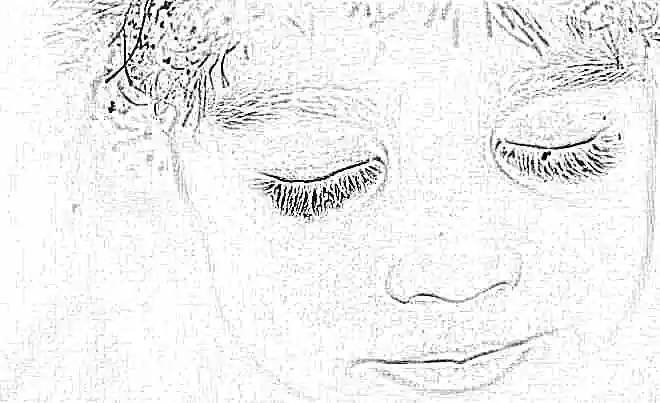
Reducing indoor humidity
Normally, the humidity in the room should be between 50 and 60%. Too dry air causes the child to develop quite dry areas on the skin, which in some cases may be a little itchy.
Scratching the skin can contribute to the introduction of a secondary bacterial infection, which becomes the cause of infectious skin diseases in the future.
Prolonged exposure to hot water
Quite often this situation occurs with infants. Keeping a baby in hot water disrupts the water-lipid layer of the skin, resulting in dryness on the baby's legs.
This symptom also often appears on the toes.

Chronic diseases of internal organs
An underactive thyroid gland or hypothyroidism is quite common in children. One of the clinical signs of this condition is the appearance of dry patches on the skin.
Irritable bowel syndrome and dysbiosis also lead to disruption of metabolic processes that occur in the skin.
Wrong nutrition
Insufficient content of microelements in children's daily diet contributes to metabolic disorders. Quite often, a deficiency of vitamins A, E and B causes a child to develop severe dry skin.
In infants, the appearance of dry spots on the skin is caused by incorrectly selected adapted artificial formula for feeding.
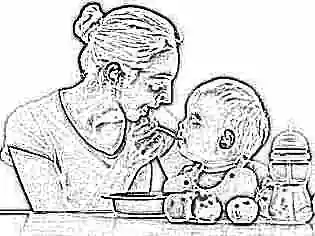
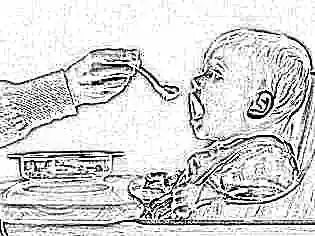
Allergic diseases
Allergies, especially during periods of exacerbation, many types of dermatitis and eczema occur with the appearance of severe dryness of the skin. In some pathologies, the affected areas are quite large in area.
Often allergic skin manifestations are accompanied by severe itching, which brings severe discomfort to the child and worsens his well-being.

Worm infestations
During their life, helminths (worms) secrete a large number of various biologically active substances that have a toxic effect on the skin.
Persistent helminthiasis is usually accompanied by the development of severe dry skin in the child and the appearance of various skin rashes on it.
Hormonal imbalance
Quite common in adolescence and puberty. A surge of systemic hormones has multiple effects, including on the skin.
Usually this situation contributes to changes in the structure of the skin. It tends to become drier and more prone to developing rashes.
Incorrectly selected children's cosmetics
Quite often, the development of dry skin in children is caused by excessive use of body lotions containing alcohol or active chemical components.
Long-term use of these products causes the delicate children's skin to become very dry and various rashes appear on it more often.
Using tar or laundry soap to wash young children can also cause severe dryness in the child.
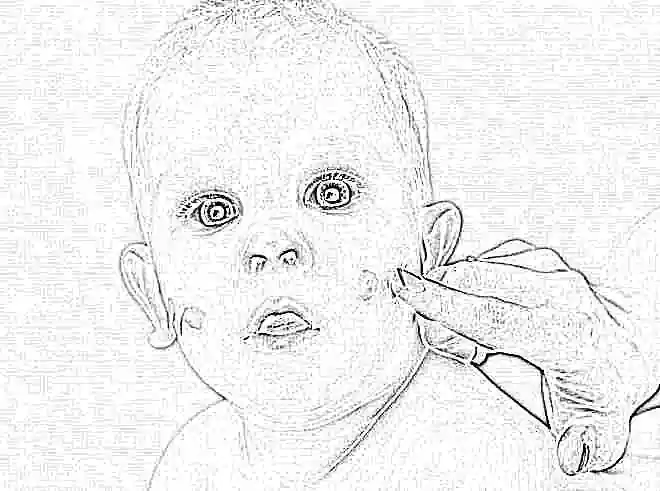
Violation of the drinking regime.
To replenish the loss of fluid that is physiologically excreted from the body through sweat, urine, saliva and feces, a mandatory replenishment of water is required.
A decrease in the volume of fluid consumed per day contributes to the fact that the baby develops pronounced disturbances in skin moisture and turgor.
This is especially noticeable during hot weather and after active sports.
Scabies
This disease, caused by the scabies mite, is quite often recorded in children. Children attending educational institutions are at increased risk.
Doctors note that scabies is most common in crowded groups. The disease usually manifests itself as dry patches of skin between the fingers, which are very flaky.

Diagnostics
A pediatric dermatologist will help distinguish pathology from the norm. A visit to this specialist is necessary.
In some cases, dangerous diseases are hidden behind the mask of increased skin dryness, which are then detected only in the later stages. Timely seeking advice from a doctor will help avoid negative consequences and prevent the development of unfavorable pathologies.
Initially, the cause that led to the development of dryness in the child should be established. If it is not eliminated, subsequent symptomatic treatment will have only a temporary unstable result.
In some cases, establishing the cause of this condition requires a whole range of diagnostic measures. The baby undergoes general clinical blood and urine tests, biochemical tests, as well as an ultrasound of internal organs. Such an expanded diagnosis makes it possible to clarify the cause that caused the child to develop unfavorable symptoms.
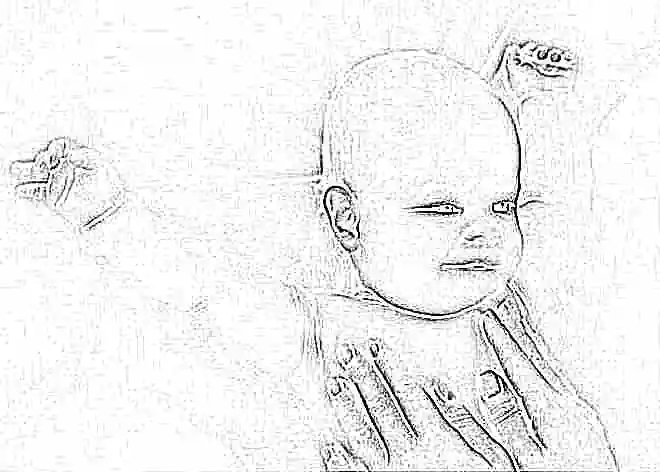
Treatment
After conducting a complex of diagnostics, doctors make recommendations. Typically they include adherence to the following principles:
Proper nutrition
Your baby's daily diet must contain healthy unsaturated fats. Including dishes made from red fish and containing vegetable oils in the children's menu will have an excellent effect on the skin.
To compensate for vitamin deficiencies, you should definitely include a wide variety of fruits and vegetables in your baby’s diet.

Using moisturizing baby cosmetics
Currently, there is a huge variety of cosmetic products. Their regular use helps improve the water-lipid layer of the skin and improve its appearance.
For cosmetics, you should use products that are approved and specifically designed for children.
They should not contain any aggressive chemical components that contribute to allergic reactions on the skin or increase dryness.
Monitor your time in the water
Do not overdry the skin during hygiene procedures. Very often this happens while bathing a child.
The duration of water procedures is strictly regulated taking into account the age of the baby. Sitting in hot water for more than the prescribed period contributes to dryness and subsequently irritation of the skin.
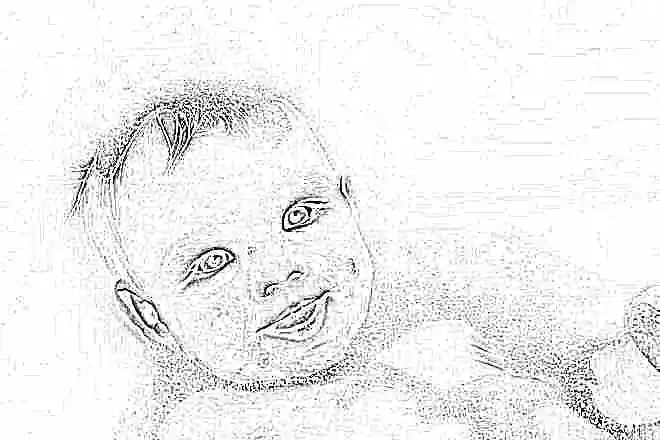
Adding decoctions to baths
If your baby is prone to skin irritation, you can add decoctions made from medicinal herbs to the baths. Chamomile, calendula, and sage are perfect for this.
The use of these products is also an excellent prevention of infectious secondary skin rashes.
You will learn about skin care for newborns in the following video.
The outer covering of the body, the skin, is one of the largest human organs. It performs a number of important functions: protection from the negative influence of environmental factors, maintains and regulates body temperature, and takes part in the processes of metabolism and respiration.
In the process of growth and development, the child learns about the world thanks to the sensitive receptors of the skin (tactile, pain, temperature). That is why disruptions in functioning affect the functioning of the entire organism as a whole. And vice versa: various pathological manifestations, in particular, dry skin on a child’s hands, can be signs of disease.
Features of children's skin

Regardless of the location of the body area, the skin of a child, like an adult, consists of three layers:
- epidermis - outer, very thin and actively growing layer;
- dermis – located under the outer layer;
- subcutaneous fat is especially developed in newborns and begins to form at the 5th month of intrauterine development.
Epidermis is the upper (horny) layer. In newborns it is very thin, but prone to rapid division and regeneration. Due to its immaturity, the outer layer is easily wounded and prone to penetration and spread of infection.
The middle layer, the skin itself, contains sebaceous and sweat glands, which are already quite well developed in utero and produce the lubricant that coats the baby at birth. The dermis also contains a well-developed network of blood vessels that ensure the function of skin respiration and metabolism.
The child’s dermis contains cells responsible for immunity to allergens, so manifestations of allergic reactions occur on the skin.
The subcutaneous fat layer is well developed in newborns, but differs in its structure in different parts of the body. It is the fat layer that ensures high heat production in children.
Why does the skin on my child's hands peel?

The baby's dermis developed in utero surrounded by fluid, and after birth it undergoes adaptation processes to new environmental conditions.
In the first months of life, both the color of the skin and its condition change. Rashes, irritation, and sometimes peeling and micro cracks may appear. These processes are physiological.
But if they are very pronounced and do not go away for a long time, this may be a manifestation of the negative influence of external factors:
- Reaction from the dermis to food. Allergic reactions in children of the first year of life manifest themselves in the form of rashes or peeling. This can happen both during breastfeeding and when adding complementary foods from new types of foods.
- Reaction to household chemicals. Dryness and flaking of the skin can be caused by detergent for washing children's clothes or shampoos and bathing gels. Also children's cosmetics: creams, powders are of poor quality or made with the addition of flavors, preservatives or other various additives.
- Chlorinated water. Frequent bathing in water with a high content of chlorine, visiting a swimming pool or washing children's clothes in such water provokes irritation and peeling.
- Excess ultraviolet rays. Long exposure to the sun without protective equipment causes loss of moisture from the upper layers of the dermis and subsequently causes dryness and flaking.
- Lack of vitamins. Most often it appears after illnesses, with reduced immunity and a lack of vitamins in food in the spring.
- Poor quality clothes. Clothing made from synthetic fibers can cause irritation and dryness. This also applies to children's toys, bedding and blankets.
- Pathological processes of internal organs. Dry skin can be a warning symptom of metabolic disorders and chronic diseases.
- Cold season. With a sharp change in temperature or exposure to cold, the top layer of the baby’s hands loses moisture and elasticity, which leads to peeling.
In cases where dryness and flaking continues for a long period, this can lead to the appearance of cracks in the hands. They can be quite painful, as a result the child becomes restless and moody. And eliminating such consequences and treating cracks is more difficult than preventing their appearance.
How to eliminate dry skin on a child's hands

With the baby’s physiological adaptation to environmental conditions, when dry skin is not pronounced, you can do without consulting a specialist and eliminate the dryness with the help of baby cream or oil.
If the manifestations do not disappear for a long period or often appear and are complicated by cracks, in this case you cannot do without an examination by a pediatrician.
Treatment directly depends on the causes of skin peeling. After identifying the causes, you can decide on treatment methods.
Allergic reactions
When diagnosing an allergic reaction, the doctor prescribes a series of allergy tests to determine the allergen. Identified food products that are allergenic to the child’s body should be excluded. In some cases, additional drug treatment with antiallergic drugs and ointments is necessary.
Dry skin additionally needs care and hydration. If cracks are visible on your hands, they must be treated with a gentle disinfectant solution. Affected areas can become additional gates for infection to enter the body. And the structural features of children's skin cannot prevent or stop the spread of infection.
Temperature
Hands need additional hydration during the winter season. If there are sudden changes in temperature indoors and outdoors during a walk, adaptation does not have time due to imperfect thermal regulation of the skin. And dry indoor air during the heating season aggravates the manifestations of dehydration.
In the summer, the baby must be additionally protected from the aggressive influence of ultraviolet radiation. It is better to use a sunscreen cream intended for early childhood.
Drinking regime
The child must receive a sufficient amount of fluid to maintain water-salt balance and metabolic processes in the body.
Natural fabrics
Your baby's synthetic clothes should be replaced with items made from natural fibers: cotton, linen or bamboo. This also applies to toys and bedding and blankets.
Detergents
When washing with soap or powder, children's clothes need additional rinsing until the smell of the detergent disappears. To wash children's clothing, it is permissible to use hypoallergenic products adapted for children's age.
Vitamins
After suffering an infectious disease, taking medications, as well as in the spring, the baby needs additional vitamin supplements, dosed strictly according to age.
Traditional methods for treating dry hand skin
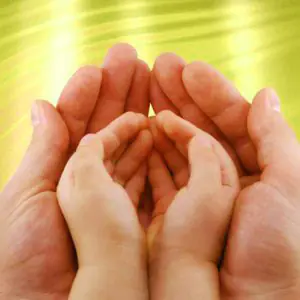
Traditional methods of combating dry hands can be used in combination with drug therapy after consultation with a pediatrician.
An excellent moisturizer is oil. It softens the dermis and prevents moisture from evaporating. For children's hands, you can use massage oil intended for early childhood, or olive, flaxseed, almond, and wheat germ oil.
If there are no visible wounds or cracks on the skin, the oil can be rubbed in with light massage movements.
You should not use active concentrated ointments and creams for moisturizing. The active ingredient of the ointment is quickly absorbed through the thin baby skin into the blood, and can also cause irritation and aggravate skin manifestations.
As a healing and anti-inflammatory agent, you can use decoctions of herbs: chamomile, plantain and sage. Cool to room temperature and make hand baths. You can add a solution of vitamins A and E to the decoction. This mixture is also added to the bath when bathing.



